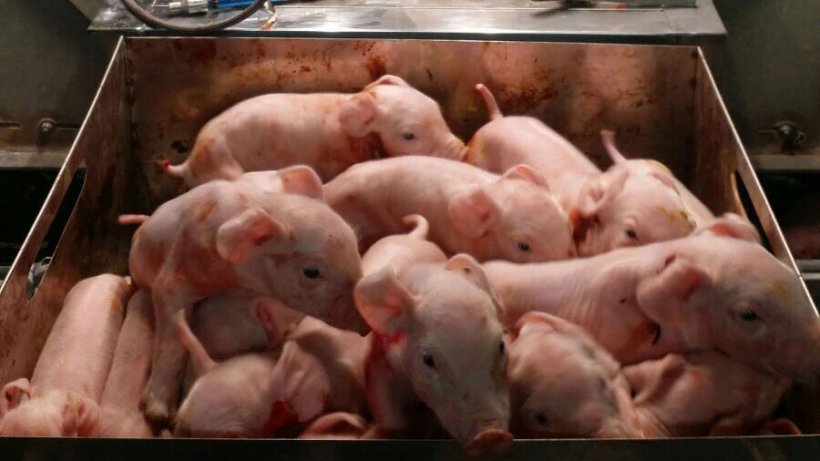Sow prolificacy has been increasing over the last ten years at a rate of one more piglet every three years. In addition, sows are leaner and have fewer fat reserves. Piglets are less mature at birth (lower liver weight) and their lipid content is lower than the 2% we used to know (Seerley, 1974). In addition, the dispersion between larger and smaller piglets has increased. The piglet's energy reserves at birth are estimated to average 400 kJ/kg, while its energy requirements for the first 24 hours of life average between 900-950 kJ/kg (Spilsbury, 2007).
In order to obtain this higher genetic potential from today's sows, considerable advances in nutrition programs are necessary, among many other factors.

The change in feed from gestation to lactation
Not so many years ago we had a single feeding phase with a single feed for replacement females, dry sows, lactating sows, and boars, but today we have a wider range of feeds designed for each production phase according to the possibilities/availability in each production system: gilt development, first and last month of gestation,single gestation feed, gestating gilts, pre-farrowing, lactating sows, lactating gilts, and supplements for lactating sows and boars).
The change from gestation to lactation feed is of concern to us, but in practice, this change often takes place overnight. Many doubts arise at this point, and we are going to reflect on a dozen of them:
- What is the exact gestation length currently?: 116, 115, 114 days?
- What is the difference in gestation length between gilts and multiparous sows?
- How many days before the expected farrowing date do we move sows to the farrowing room?
- What feed should we give on the days prior to farrowing while the sows are still gestating?
- When is the best time to change from gestation diet to lactation diet?
- How much feed and nutrients should the sow be eating on the days prior to farrowing?
- How much feed should we give on the day of farrowing and how?
- How should we increase the amount of lactation feed from the day of farrowing until reaching maximum consumption?
- How do we adapt the amount of daily feed according to the type of feeding system we have?
- Is using a peri-farrowing feed recommended? What are the characteristics, which days should it be used and quantities?
- What can we call this period that includes the last days of gestation and the first days of lactation, and how long exactly would it last?
In this series of articles we are going to focus on the last question, calling it the transition period (TP) which we will define as the last ten days of gestation and the first ten days of lactation where we observe important physiological and metabolic changes in the sows (Theil, PK, 2020). It may seem like a short period, but it is essential to the productivity of today's hyperprolific sows, and it has a similar length to a 3-4 week lactation. This period will precisely influence the last phase of fetal development, growth of mammary tissue, and production of both colostrum and milk, as well as the sow's feeding behavior during lactation and her loss of body condition, which will influence her subsequent fertility. This transition period is receiving increased attention in the U.S. and Canada

Litter of 16 piglets from a hyperprolific sow.
Objectives of the diet in the transition period
The latest research work focuses on using a diet that:
- Helps in the farrowing process, reducing the need for assistance
- Maintains productivity
- Improves piglet survival
Research on the role of nutrition in this phase is not new; as early as the 1980s, Dr. Jim Pettigrew gathered work on differences regarding fat supplied during this period and piglet survival. Recently, work is being done in several areas including:
- Incorporating high levels of fiber and its effect on reducing the duration of farrowing (Feyera, 2017).
- The contribution of hemicellulose in fecal scores (Ramaekers, 2013).
- Providing multiple meals prior to farrowing reduces the rate of stillborns and increases piglet survival (Miller, 2020 - Gourley, 2020).
- High doses of phytases reduces the duration of farrowing (Batson, 2018).
- High doses of zinc sulfate improves piglet survival (Holen, 2020).
More research on nutrition during the TP is needed to confirm these promising results, which will also help us minimize metabolic disorders during lactation with the following benefits.
- Optimize colostrum and milk production
- Avoid excessive loss of body weight, backfat, and/or loin muscle
- Wean the highest number of piglets with the best viability
- Wean the most kilos of piglets
- Reduce nursing piglet mortality
- Reduce sow mortality
- Reduce metabolic disorders around farrowing
- Reduce wean to service interval
- Improve fertility of the subsequent parities
The lactation phase is only 20% of the reproductive period (30 out of 150 days) where we expect the sow to eat 30% of the annual feed intake, which represents in economic terms about 5% of the total feed cost of a complete cycle. But these small percentages have a very important impact on the productivity and profitability of the farm, which is why we must concentrate our efforts on this period, which is short but has a great return on investment.







